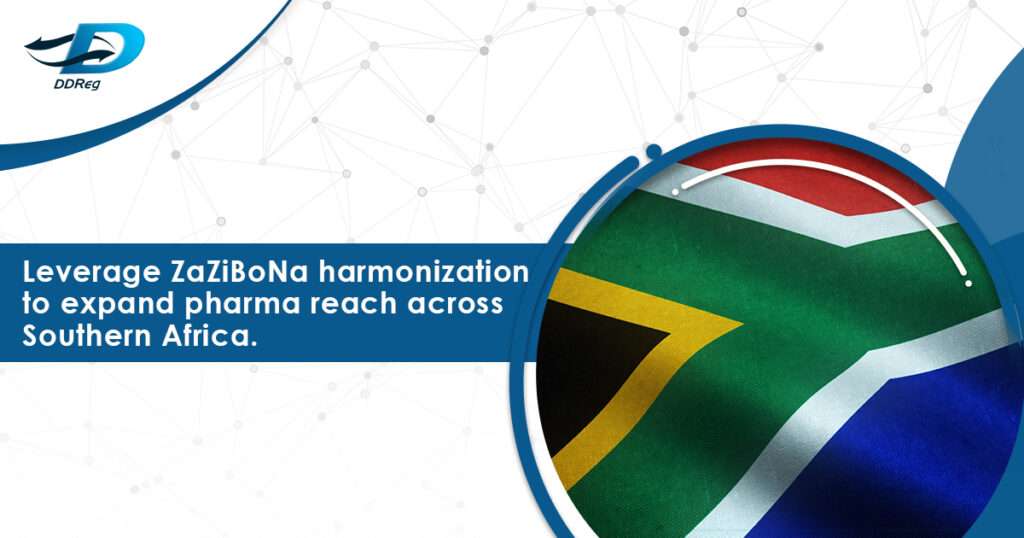
For pharmaceutical companies eyeing expansion into the Southern African region, understanding the regulatory processes of 16 different countries can be a costly, time-consuming, and resource-intensive endeavor. But what if there was a way to streamline this process reducing approval times, harmonizing requirements, and unlocking simultaneous market access across multiple nations? Enter ZaZiBoNa, a collaborative medicines registration initiative that’s quietly transforming the way regulatory approvals are conducted within the Southern African Development Community (SADC). Originally launched by Zambia, Zimbabwe, Botswana, and Namibia, this pioneering effort has grown into one of Africa’s most effective regional regulatory harmonization models. With more than 350 products assessed and counting, ZaZiBoNa is increasingly seen as a strategic gateway to the SADC pharmaceutical market.
In this blog, we explore what ZaZiBoNa is, how it works, the tangible benefits it offers to pharma companies, and the key considerations businesses must keep in mind to successfully leverage this collaborative platform for faster and broader market access.
What is ZaZiBoNa?
ZaZiBoNa is a collaborative medicines registration initiative in Southern Africa, specifically focusing on dossier assessments and Good Manufacturing Practice (GMP) inspections. Founded in October 2013 by Zambia, Zimbabwe, Botswana, and Namibia, it received support from the WHO Prequalification team and the Southern Africa Regional Program on Access to Medicines (SARPAM). The initiative was created to tackle systemic, long-standing issues such as significant backlogs, lengthy registration times, poor retention of human resources, and insufficient capacity within national regulatory authorities. ZaZiBoNa is transforming how pharmaceutical companies can successfully penetrate and thrive in the Southern African Development Community (SADC) market. By offering a harmonized assessment pathway, it alleviates the administrative burden, time, and potential costs of navigating 16 individual regulatory systems. This directly translates to faster market entry and a more predictable regulatory environment, providing a substantial competitive advantage for pharmaceutical companies. While some aspects of the evaluation are conducted through work-sharing, each individual NMRA still needs to evaluate country-specific requirements.
As of 2023, ZaZiBoNa has assessed over 350 products, with the majority being generic medicines. The success rate and composition of reviewed products remain similar, with a significant tilt towards foreign generics.
ZaZiBoNa’s Impact: Benefits for Pharma Companies
The benefits for pharmaceutical companies are significant. By aligning dossier requirements and sharing workload, ZaZiBoNa reduces duplication and speeds up access. The harmonized format means companies may still need country-specific “Module 1” details, but all technical modules 2–5 will be common. The result is simultaneous multi-country market access. ZaZiBoNa enables manufacturers to enter multiple SADC markets simultaneously, reducing duplication and lowering market entry costs.
Its key advantages include:
- Faster approvals: Joint reviews eliminate redundant work. Industry surveys report shorter timelines to approval under ZaZiBoNa. The median time to a joint recommendation is roughly 9–12 months and once ZaZiBoNa issues its recommendation, countries typically wrap up their national approvals in about 1–2 months.
- Harmonized requirements: ZaZiBoNa follows common SADC guidelines, easing dossier preparation. The same CTD backbone and unified templates reduces on minor discrepancies. As a result, companies are saved from spending time and resources on compiling submissions and responses to queries.
- Work-sharing efficiency: Over the last decade, ZaZiBoNa has trained 150+ NMRA staff in dossier assessment and GMP inspection, meaning more competent reviewers across the region.
- Expanded patient access: For pharma companies, a coordinated process means products can enter all member markets at roughly the same time, broadening the patient base. A survey found that ZaZiBoNa “increased the availability of quality-assured medicines for patients in the SADC region”. To date the initiative has jointly assessed over 350 products, making it one of the most impactful and recognized regulatory harmonization initiatives in Africa.
Hurdles for Pharma Companies
Despite these benefits, challenges remain. Companies must still fulfill each country-specific requirement. The ZaZiBoNa process is still evolving, and not all participating countries implement decisions simultaneously, as each retains sovereignty over final product registration. This results in inconsistencies or delays in market entry even after a positive ZaZiBoNa recommendation. The initiative also includes both active and non-active members, with variations in capacity to conduct dossier assessments and good manufacturing practice inspections. Furthermore, ZaZiBoNa itself does not force countries to register a product; it only provides a scientific opinion. Legally, each country still decides independently. This means some countries might take longer to issue final marketing authorizations. Firms must therefore follow up with each NMRA after the joint review, paying attention to any remaining local checks, labeling approvals, or fee requirements.
Conclusion
ZaZiBoNa represents a major advancement in regulatory harmonization across Southern Africa. By aligning dossier requirements, facilitating joint reviews, and supporting regional capacity building, it offers pharmaceutical companies an efficient route to market. While ZaZiBoNa continues to evolve, stakeholders have expressed interest in transitioning toward a more centralized regional mechanism in the future. As of now, it remains a decentralized, work-sharing model. For companies seeking to expand in Southern Africa, leveraging ZaZiBoNa is a strategic move to understand regulatory complexities and deliver quality medicines faster.
How can DDReg help?
DDReg Pharma offers end-to-end regulatory support for pharmaceutical companies aiming to register their products under the ZaZiBoNa initiative. From preparing harmonized CTD dossiers and managing Module 1 country-specific requirements, to coordinating with individual National Medicines Regulatory Authorities (NMRAs) for post-recommendation follow-ups, DDReg ensures a streamlined, compliant, and efficient path to multi-country approvals. Our experts are well-versed in the nuances of SADC regulatory frameworks, GMP inspection preparedness, and dossier life cycle management.
Read more from our experts: Evolution of Africa’s Regulatory and Healthcare Landscape
